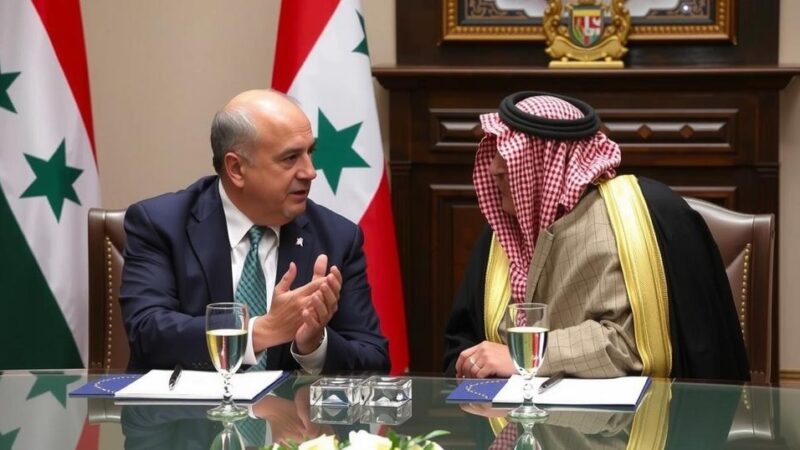In a significant escalation of conflict, Israeli airstrikes in Lebanon have resulted in the deaths of seven key Hezbollah leaders, including Hassan Nasrallah. This wave of attacks has surprised many in Lebanon and the broader Middle East and is viewed as a substantial military victory for Israel. The loss of such influential figures poses challenges for Hezbollah, signaling potential shifts in the group’s operational command and future strategies.
In the past week, Israel has intensified its military operations in Lebanon, resulting in the deaths of seven high-ranking commanders and officials from Hezbollah, including the group’s leader, Hassan Nasrallah. This escalation has elicited shock across Lebanon and the broader Middle East, with Israeli officials hailing significant military and intelligence successes. Hezbollah had recently opened a conflict front to bolster Hamas in the Gaza Strip, occurring just after Hamas’s unprecedented assault into southern Israel. The recent airstrikes represent a dramatic military escalation in the ongoing regional tensions between Israel and Hezbollah. The loss of such pivotal figures has inflicted substantial damage upon Hezbollah, a force that has been dominant in Lebanese politics and military affairs since its formation in the early 1980s. Among those killed, Hassan Nasrallah had been at the helm since 1992, guiding Hezbollah through multiple confrontations and expanding its influence both within Lebanon and beyond. Nasrallah’s leadership saw Hezbollah become a dominant military power, participating actively in regional conflicts and assisting in the survival of the Assad regime during the Syrian civil war. His presence has been polarizing; supporters attribute to him the success of expelling Israeli forces from southern Lebanon, while detractors criticize Hezbollah’s unilateral military posture in alignment with Iranian interests. Along with Nasrallah, key officials like Nabil Kaouk, Ibrahim Akil, Ahmad Wehbe, Ali Karaki, Mohammad Surour, and Ibrahim Kobeissi were also killed in recent strikes. Kaouk had notable prominence within Hezbollah and was considered a potential successor to Nasrallah. Akil and Wehbe were vital commanders of the elite Radwan Forces, involved in significant military operations. Karaki and Surour held pivotal roles, with Surour overseeing Hezbollah’s drone operations that have evolved in the current conflict. Other significant figures have also been assassinated, such as Fuad Shukur, who was previously targeted by Israeli forces. Amidst these upheavals, Naim Kassem, the deputy leader, stands as the highest-ranking official remaining, signaling potential shifts within Hezbollah’s command structure. Kassem has been instrumental in various activities associated with the group and has been actively involved in its political and military strategies. The potential leadership of Hashim Safieddine, Nasrallah’s cousin and current leader of Hezbollah’s central council, looms as Hezbollah navigates through this tumultuous period. As the situation unfolds, the resilience and strategic direction of Hezbollah remain uncertain, especially with the presence of other targets within the organization still alive but facing intense scrutiny from Israeli operations.
The recent military engagements in Lebanon highlight the ongoing hostilities in the region, chiefly between Israel and Hezbollah, a significant militia with deep-rooted ties to Iran. The assassinations of high-ranking officials mark a considerable tactical shift by Israel, aiming to cripple Hezbollah’s command and operational capabilities. Historically, Hezbollah emerged in response to the Israeli invasion of Lebanon in the early 1980s and has since evolved into a prominent political and military power. Under Nasrallah’s command, the group has not only strengthened its military presence in Lebanon but has also influenced broader geopolitical dynamics in the Middle East, particularly in areas like Syria and Iraq. Insistent on expanding its military capabilities, Hezbollah has turned to advanced technologies, such as drone warfare, to challenge its adversaries. This latest sequence of strikes reflects the high stakes of regional politics, characterized by violent confrontations with far-reaching implications.
The recent Israeli strikes that resulted in the deaths of seven high-ranking Hezbollah officials, including the group’s leader, signify a critical moment in the ongoing conflict between Israel and Hezbollah. These events reveal the vulnerabilities within Hezbollah’s leadership and operational effectiveness as they attempt to recover from significant losses. The future of the organization and its role in the region hangs precariously, with significant questions regarding its strategic direction and survivability in light of heightened Israeli hostility.
Original Source: www.nbcphiladelphia.com







